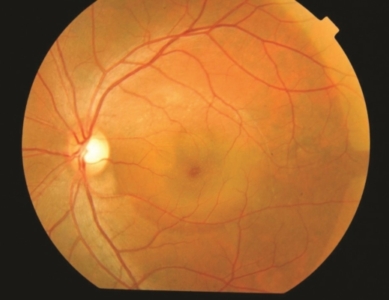Central Serous Chorioretinopathy occurs when a leak develops, and fluids accumulate under the retina. The fluid leakage comes from a tissue layer under the choroid’s retina. The condition is most common in young men under stress but can affect anyone at any age. At times, it is associated with the use of steroids.

Symptoms of Central Serous Chorioretinopathy can include:
- Distorted, dimmed, or blurred central vision.
- A dark area in your central vision.
- Straight lines may appear bent, crooked, or irregular in your affected eye.
- Objects may appear smaller or further away than they are.
- Objects may have a brownish tinge or appear duller in color when looking at a white object.
In order to accurately diagnose this condition, a retinal specialist will dilate the eye to examine the retina. Photographs will be taken, and a fluorescein angiography will typically be performed. During fluorescein angiography, a dye is injected into your arm and travels through the blood vessels. This orange dye will show abnormalities in your eye and determine if central serous chorioretinopathy or another condition is present.
Optical Coherence Tomography also helps the specialist look directly through the retina. This procedure scans the back of the eye. It provides a 3D photo of the layers of the retina, which allows the medical professional to measure the retinal thickness and find the area of swelling.
Most people with central serous chorioretinopathy regain their vision without treatment but may not be quite what it was before experiencing the condition. About half of patients who have had central serous chorioretinopathy will have it return. Regular follow-up exams with a retinal specialist can help monitor this condition and treat it if needed.






